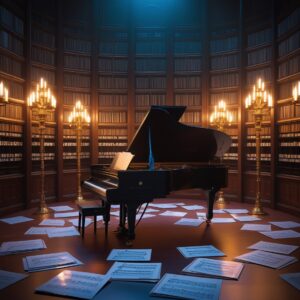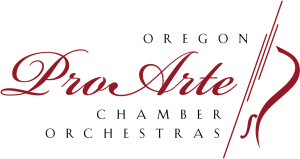Many of the most celebrated film composers began their careers with classical training. A strong knowledge of music theory, orchestration, and composition is almost mandatory. It is this classical foundation that enables composers to tap into centuries of musical wisdom and innovation while doing something new for the movies.
Late Ennio Morricone, who studied classical composition, went on to revolutionize film music through his imaginative scoring techniques. Blending classical methods with unusual sounds, he created a new sonic language for Westerns and more. Hans Zimmer merges classical foundations with electronic music and global instruments to create varied, very contemporary sound worlds.
Such a base also cultivates reverence for music’s emotional power and structural discipline, thus enabling composers to work more effectively with directors and editors. Knowing how themes might develop and interact with film editing allows composers to produce scores that seem very natural and inherent to the film’s rhythm.
The Evolution From Classical Concert Halls to Movie Theaters
How fascinating it is to observe how classical music found a new identity by transitioning from the sacred space of concert halls to the realm of cinema. With the advent of synchronized sound, the movies revolutionized the art of storytelling, making original scoring an integral part of the new art form. Composers like Max Steiner, who is often considered the father of film music, drew direct inspiration from classical masters and created some of the earliest fully realized movie scores.
Steiner’s work on films like “Gone with the Wind,” which created complex, symphonic underpinnings for an entire narrative, was some of the earliest completely realized. This was a major leap from using existing classical pieces to having bespoke orchestral music tailored scene-by-scene. What began as borrowed classical motifs evolved into original compositions that adhered to the demands of cinema pacing, character development, and story arcs.
In the decades following, film scores embraced enhancements such as larger orchestras and novel recording methods, but at their core, they remained classical. The most renowned modern example is John Williams, who uses classical composition techniques while employing modern sensibilities. Through his work, symphonic music has been reintroduced to the masses, and by way of cinema, interest in orchestral traditions has been revived.
Compositional Styles
One of the greatest difficulties that film composers face is the structured discipline of classical music versus the flowing, often unpredictable nature of film narrative. Classical forms such as sonata-allegro or rondo require cohesion and development across several movements, but films require the kinds of immediate musical flexibility that serve a director’s vision.
In doing so, film composers adapt and alter classical structures, while still maintaining their underlying principles. A film score may return to a theme several times, using fragments or altered versions of it, depending on the developments of story contexts. This development of motifs is less strict than in traditional symphonies, allowing the music to reflect the rise and fall of cinematic storytelling.
Classical harmony and counterpoint techniques serve as a base for composers to create intricate textures that enhance mood and emotion. Scores achieve depth and sophistication by layering melodies and harmonies in ways that parallel classical practices. Yet they often strip down harmonic complexity so that the music remains immediately accessible and never overshadows visuals or dialogue.
 The Impact of Classical Training on Film Composers
The Impact of Classical Training on Film Composers
Some of the most celebrated film composers started out with a heavy classical emphasis in their background. Having a strong command of music theory, orchestration, and composition is almost essential. This training allows composers to channel musical knowledge and innovations from centuries past, doing something new for the cinema.
The late Ennio Morricone studied classical composition before revolutionizing film music with his inventive scoring techniques. His blend of classical techniques and unconventional sounds created a new sonic language for Westerns and beyond. Hans Zimmer combines classical foundations with electronic music and world instruments to craft diverse and modern sound worlds.
Respect for music’s emotive power and structural discipline, an aspect of this classical grounding, is further cultivated in composers, enabling them to work effectively alongside directors and editors. Composers who understand how themes may evolve and interact with the process of film editing can give birth to scores that are really seamless and natural within the very rhythm of the film itself.
The Role of Classical Music in Contemporary Film Scores
While new musical and experimental sound design finds favor with numerous modern filmmakers, the influence of classical music remains ever-present. Scores without traditional orchestras still underpin themselves with principles drawn from classical music-based concepts— be it melodic phrasing, harmonic tension, or thematic development.
Some current scores even directly use classical works to bring back certain periods or moods. Piano sonatas, string quartets, or choral pieces in period films or documentaries would anchor the viewers in history. An aspect of authenticity is created, and the classical repertoire’s emotional depth, in certain ways, is imitated only partially by original film music.
Live orchestral performances of film scores are being resurrected, creating a new buzz around classical concert performances and cinematic favorites. Audiences love to see these complex compositions fully realized, giving film music a kind of artistic independence. Consider how much classical music and film scoring continue to crossover from that.
How Audiences Perceive Classical Influence in Film Music
One of the most interesting aspects of this relationship is how moviegoers respond to classical-inspired scores without always realizing their origins. You don’t have to be a music aficionado to feel the emotional weight carried by a soaring string section or the tension created by ominous brass.
Classical music’s emotive power taps into universal human experiences, and film scores leverage this instinctive reaction. The grandiosity and scale of orchestral music often amplify cinematic storytelling, making moments more memorable and impactful.
This accessibility contributes to why so many film scores become iconic beyond the movies themselves. Themes composed by figures like John Williams or Howard Shore have transcended cinema, entering popular culture and concert repertoires. Classical music’s structures provide a familiar framework that helps listeners connect deeply with these pieces.
